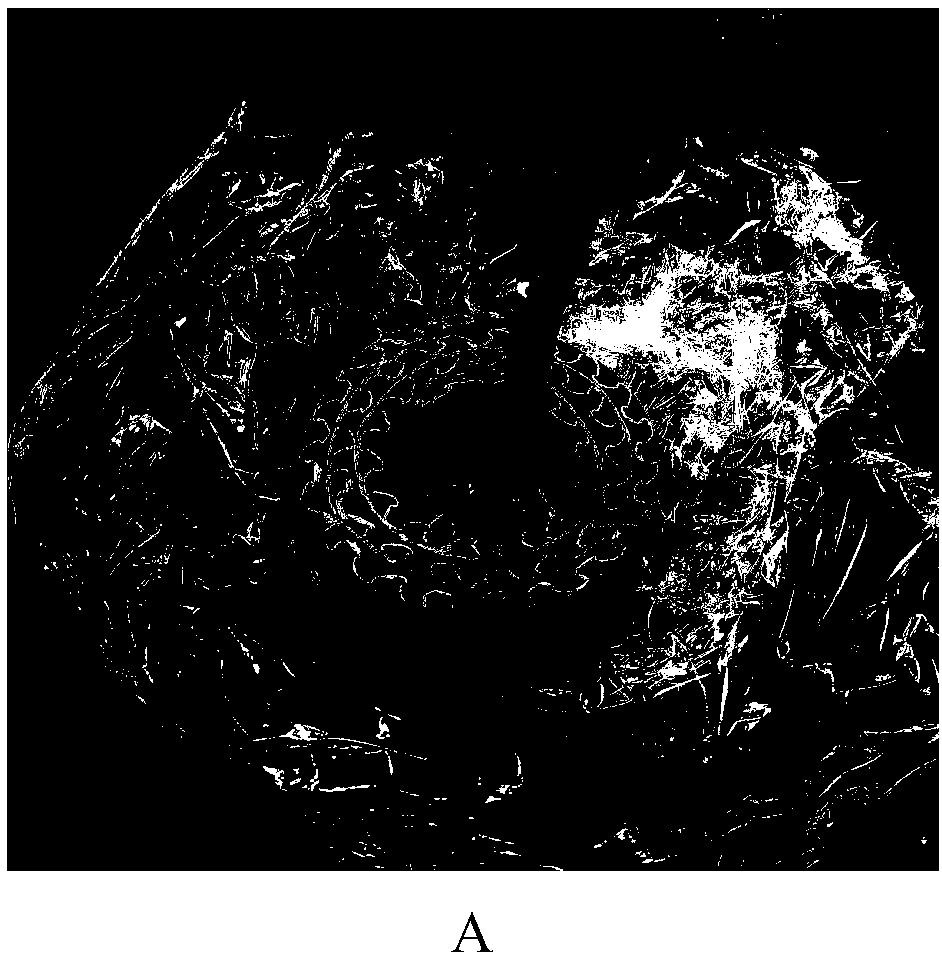A kind of collection method of Japanese ladybug pupae and artificial large-scale breeding method of Japanese ladybug
A large-scale technology for the beetle beetle, applied in the field of insect reproduction, can solve the problems that the reproduction and release of the beetle beetle cannot be realized, the large-scale reproduction of the beetle beetle cannot be realized, and there is no stable source of indoor insects, etc. , to achieve the effect of convenient pupa collection operation process, satisfying large-scale reproduction, and not easy to find and collect
- Summary
- Abstract
- Description
- Claims
- Application Information
AI Technical Summary
Problems solved by technology
Method used
Image
Examples
Embodiment 1
[0043] Embodiment 1: the collection method of Japanese ladybug pupae
[0044] 1, step a ladybug ovum obtains: the eggplant plant that has been infected with Bemisia tabaci is moved into ladybug adult raising cage (the conventional insect cage that adopts nylon gauze to make, wide 40cm * deep 45cm * high 50cm), during the oviposition period ladybug Female adults will automatically lay eggs on the back of eggplant leaves; by replacing eggplant plants infected with whitefly every day, you can continuously obtain ladybug eggs with relatively uniform development status.
[0045] 2. Ladybug juvenile rearing in step b: move the potted eggplant plants with ladybug eggs produced in step a into the ladybug breeding room and raise them for 14-15 days;
[0046] 3. Collection of ladybug pupae: when the young ladybug (egg stage + larval stage) grows to the 12th day, place a pupation circle at the base of the eggplant stem; when the young ladybug (egg stage + larvae stage) grows to the 14th ...
Embodiment 2
[0050] Example 2: Evaluation of the collection effect of the pupation circle on the pupae of the Japanese ladybird beetle
[0051] Mature larvae of the Japanese ladybug prefer to pupate on the back of old leaves, in the grooves of the edge of plastic pots, or in other hidden corners of the insect culture room. They are relatively scattered and difficult to collect collectively. Improving the collection efficiency of ladybug pupae is of great significance to improving the reproductive efficiency.
[0052] 1. Use single-sided corrugated cardboard as the material to make a ladybug pupation ring.
[0053] First, cut the single-sided corrugated cardboard into long strips of corrugated cardboard (such as figure 2 ), the length is 45cm, and the width is designed to be 3.0cm, 4.0cm, 5.0cm, 6.0cm, 7.0cm respectively. Wrap 3 circles along the base of the stem of the potted eggplant plant, and fix it into a cylindrical pupation circle with pins (such as image 3 ), the corresponding ...
Embodiment 3
[0059] Embodiment 3: method for artificial large-scale propagation of ladybug japonica
[0060] The artificial large-scale breeding of Japanese ladybug uses eggplant as the host plant for breeding Bemisia tabaci, and uses whitefly as the prey for raising Bemisia tabaci, involving eggplant plant cultivation, prey Bemisia tabaci breeding, ladybug eggs Collection, feeding of ladybug larvae, collection of ladybug pupae and rearing of ladybug adults.
[0061] 1. Eggplant plant cultivation
[0062] (1) buy the matrix nutrient soil that is used for raising seedlings in the market, then put nutrient soil into the prepared seedling-raising tray of 58cm * wide 30cm for subsequent use;
[0063] (2) Use eggplant as the host plant for breeding Bemisia tabaci, buy eggplant seeds susceptible to bemisia tabaci in the market, soak 30 minutes with 0.1% carbendazim solution of active ingredient before sowing, then, put the seeds on wet gauze Wrap it in the middle, place it under the condition ...
PUM
 Login to View More
Login to View More Abstract
Description
Claims
Application Information
 Login to View More
Login to View More - R&D
- Intellectual Property
- Life Sciences
- Materials
- Tech Scout
- Unparalleled Data Quality
- Higher Quality Content
- 60% Fewer Hallucinations
Browse by: Latest US Patents, China's latest patents, Technical Efficacy Thesaurus, Application Domain, Technology Topic, Popular Technical Reports.
© 2025 PatSnap. All rights reserved.Legal|Privacy policy|Modern Slavery Act Transparency Statement|Sitemap|About US| Contact US: help@patsnap.com



